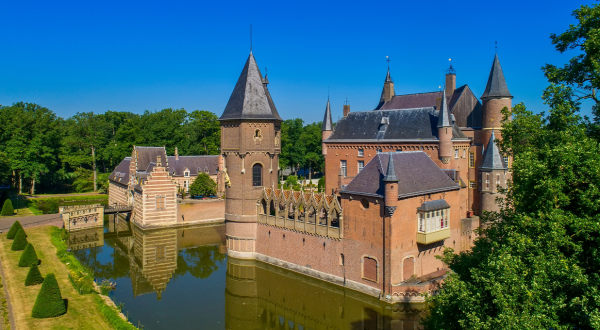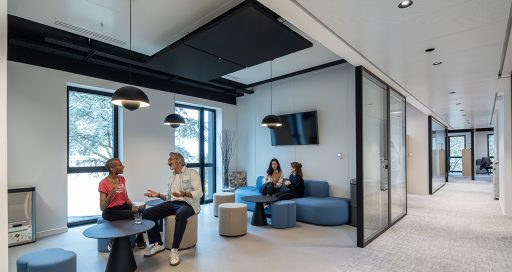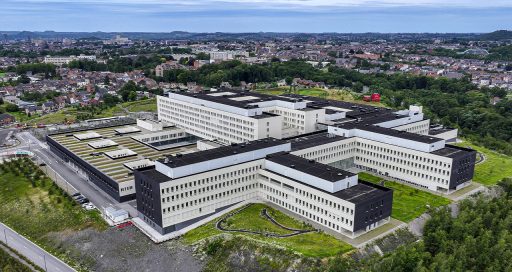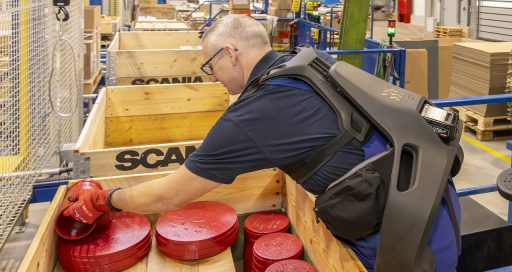The harpmaker Camac has entrusted Tunzini Le Mans with the HVAC installations for its new workshops in western France. They are combining climate engineering with artisanal expertise to guarantee an exceptional sound.
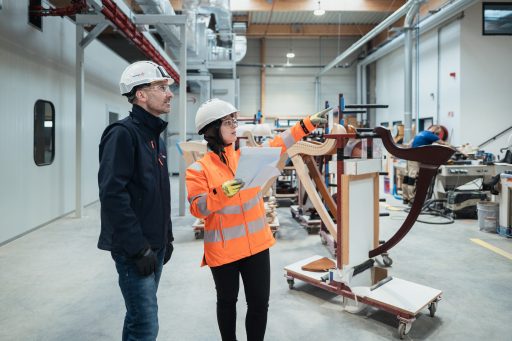
©Atypix
The world of music is not somewhere we would generally expect to find climate engineering, and yet here we have the two in perfect harmony. From Mouzeil, deep in the countryside of western France, Camac, France’s only maker of classical and Celtic harps, has been selling its instruments internationally for more than 50 years. Even today, although some precision machinery is used, the work is essentially done by hand in this family-run certified “living heritage company”.
The harpmakers’ workshop has become too small, despite several enlargements since its construction in 1972, and they have decided to treat themselves to more suitable premises. This will include an extension to the workshop and the installation of process booths.
These ultra-controlled spaces are where the most delicate operations are performed: assembling, gluing and varnishing the instruments. Behind the manual woodworking process lies an unexpectedly complex technical operation in which every degree matters for the final quality of the sound.
“To ensure perfect harp acoustics, the temperature has to be precisely regulated in each booth,” explains Maxime Pertuzon, Design Office and Business Development Manager at Tunzini Le Mans (VINCI Energies Building Solutions), the supplier chosen to install the HVAC, plumbing, compressed air, fire hose reels and sprinkler system.
Production-based approach
The booths are the beating hearts of the creative process, each equipped with an autonomous air handling unit and air heaters. These work according to an intelligent air compensation principle – in order to save energy, extractors are only switched on when solvents are being used: “We don’t want to disturb the air for no reason,” laughs Maxime Pertuzon.
“To guarantee perfect acoustics in the harps, the temperature in each booth must be constant.”
For the Tunzini teams, this production-tool-based approach differs from their usual projects, which more often focus on ensuring employee comfort than that of inanimate objects. “Usually, we install heating and ventilation systems for user comfort. Although we were working on the heating for the offices and the workshop, the process was the priority. The focus was on the company’s production base, and it was naturally imperative that we fitted in around the customer’s production schedule.” Equipment for the Camac workshop was also selected to allow the installation of a building management system (BMS) if the need arose in the future.
An evolving project
The project was completed in January 2025 after six months of intensive work and having gradually evolved in scope, with the budget rising to more than €700,000. “We kept adapting as the service provider’s studies progressed,” says Maxime Pertuzon.
“The architect and the customer were working jointly from the start of the project. The customer had an extremely detailed understanding of their process, and we had numerous discussions with them to explain what technical solutions we could apply to meet their exact needs.”
These technical and human interactions are all the more valuable when they are more than simple routine. “The nature of the business and the unique features of the project led to our becoming partners rather than operators. That’s relatively unusual. Our capacity for generating new ideas sets us apart and enables us to make the difference.”
09/29/2025
